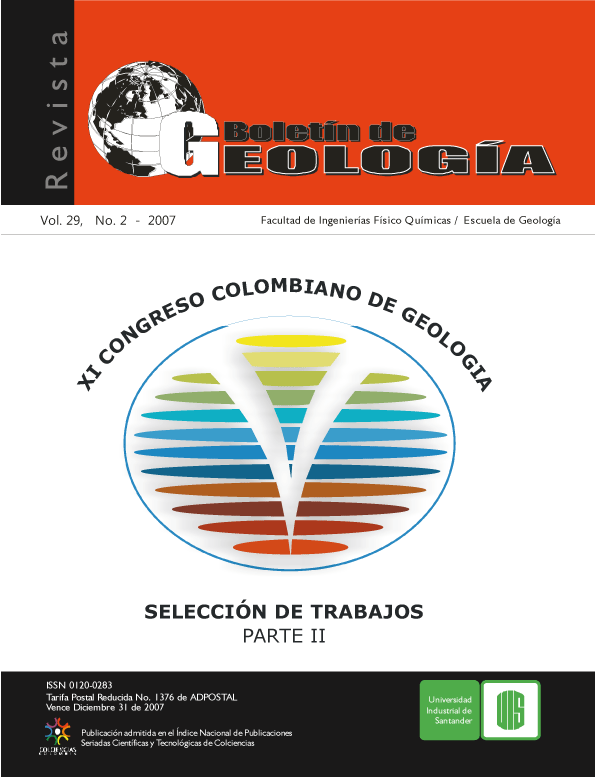PALINOFACIES Y GEOQUIMICA ORGANICA EN LAS ROCAS DEL APTIANO-CONIACIANO (VALLE SUPERIOR DEL MAGDALENA)
Cómo citar
Resumen
Un estudio comparativo entre la geoquímica orgánica y las palinofacies fue llevado a cabo en 67 muestras obtenidas a lo largo del intervalo Aptiano- Coniaciano en una sección de la quebrada Paipa, Sur del municipio de Ataco (Tolima), cuenca del Valle Superior del Magdalena. Mediante las observaciones palinofaciales se identifcaron 7 componentes orgánicos: materia orgánica amorfa (MOA), ftoclastos, polen, esporas, dinofagelados, opacos, resinas y foraminíferos. La variación porcentual de estos componentes permitió identifcar una infuencia continental importante en la Formación Caballos y un dominio marino en las formaciones La Luna, Lidita Inferior, Tetúan y Shale de Bambucá.
Los datos geoquímicos muestran altos valores de COT e IH para las formaciones marinas y en menor medida para la Formación Caballos, datos relacionados con kerógenos tipo II/III, respectivamente. El Tmax revela que la mayoría de las muestras no han alcanzado la madurez termal para la generación de hidrocarburos. La relación Palinofacies-Geoquimica orgánica indica que las Formaciones La Luna, Tetúan, Shale de Bambucá, pueden considerarse como rocas fuentes de petróleo debido a sus altos valores en IH, COT y altos contenido en MOA de tipo marino. La materia orgánica que origina kerogenos tipo I y II generalmente presenta alta fuorescencia, hecho que no se corrobora en este estudio, debido a la ausencia notoria de esta característica en la mayoría de las muestras.
Palabras clave: (Geoquímica orgánica, palinofacies, fuorescencia, materia orgánica, hidrocarburos)
Descargas
Referencias
Gorin, G. E., Fiet, N., Pellaton, Caroline (2001). “Problems in identifying the origen of amorphous organic matter in palyno-facies studies:some examples.” International Association of Sedimentologist, Vol. 21, No. 102.
Kairuz, E. P. F. O., Solano (2000). “Provincia petrolífera del Valle Superior del Magdalena, Colombia.” VII Simposio Bo-livariano 1: 533-536Navarro, J., Códoba, F. (2002). Definición de eventos de generación de hidrocarburos en la subcuenca de Girardot, Valle Superior del Magdalena, Colombia. Bogotá, Universidad Nacional: 422
Ramón, J. C., Dzou, L. I. et al. (2001). “Evolution of the Cretaceous organic facies in Colombia: implications for oil compositions.” Journal of South American Earth Sciences, Vol. 14, pp. 31-50.
Sarmiento, L. F. and Rangel, A. (2004). “Petroleum systems of the Upper Magdalena Valley, Colombia.” Marine and Petroleum Geology, Vol. 21, pp. 373-391.
Tyson, R. V. (1995). Sedimentary Organic Matter. Organic fa-cies and palynofacies, Chapman & Hall.
Tyson, R. V. (2006). Personal communication.
Vergara, L. (1997). “Cretaceous Black Shales in the Upper Magdalena Valley, Colombia. New Organic Geochemical Results (Part II).” Journal of South American Earth Sciences, Vol.10(2), pp. 113-145
.
Vergara, L. (1997). “Stratigraphy, Foraminiferal Assemblages and Paleoenviroments in The late Cretaceous of the Upper Mag-dalena Valley, Colombia (Part I).” Journal of South Amnerican Earth Sciences, Vol. 10(2), pp. 111-132
